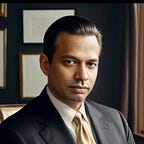The Protest that Triggered Putin’s Paranoia
Never underestimate the platforms for collective expression
Nothing illustrates Russian President Vladimir Putin’s strategy better than the events that unfolded in Belarus. Following the dissolution of the Soviet Union in 1991, Belarus gained independence. However, unlike some other former Soviet states, Belarus did not significantly diverge from Russia’s political and economic model.
Alexander Lukashenko, who has been the President of Belarus since 1994, maintained a pro-Russian stance, often favoring policies that align closely with Moscow’s interests. After Vladimir Putin ascended to the presidency of Russia in 1999, gradually transforming his seat of governance into a virtual throne, the 435-mile expanse separating Minsk from Moscow diminished steadily.
Similar to Russia, Belarus holds regular presidential elections, yet invariably, the outcome is preordained. In Russia, Vladimir Putin consistently emerges victorious, while in Belarus, it is Alexander Lukashenko who repeatedly claims the win. Lukashenko’s authoritarian approach to governance, characterized by stifling opposition and exerting control over the media, closely mirrors Putin’s model of political leadership in Russia.
